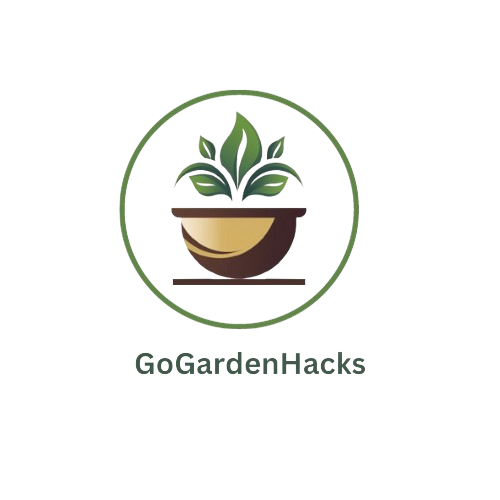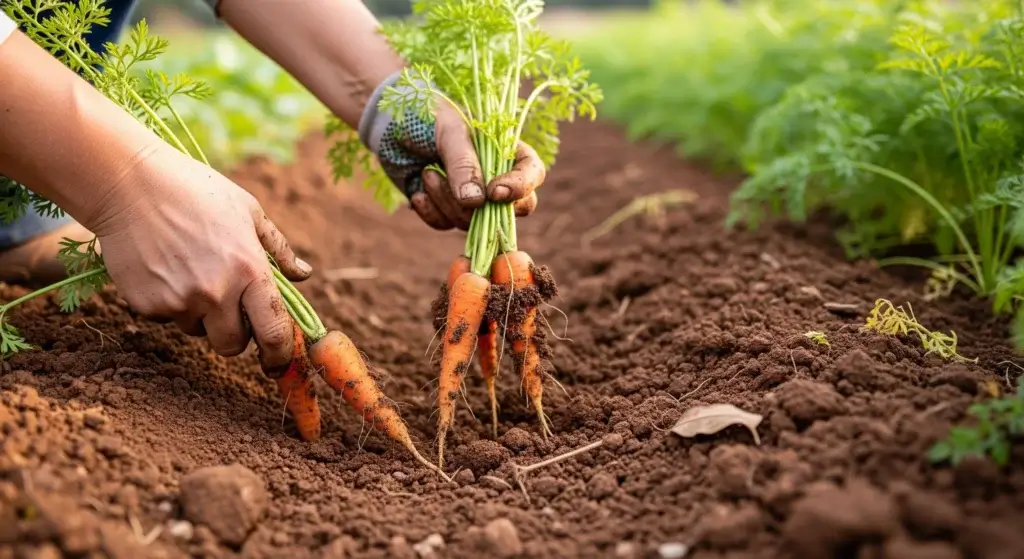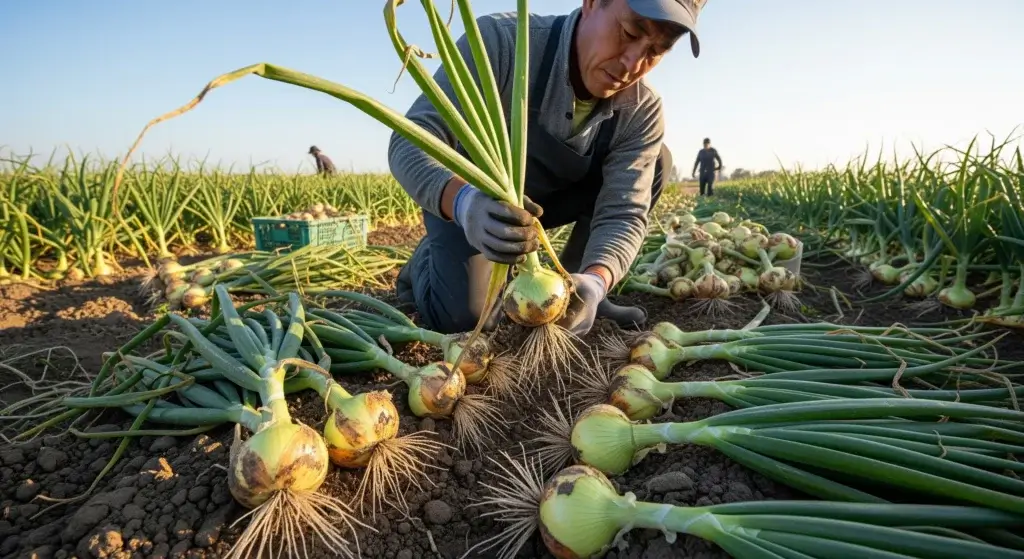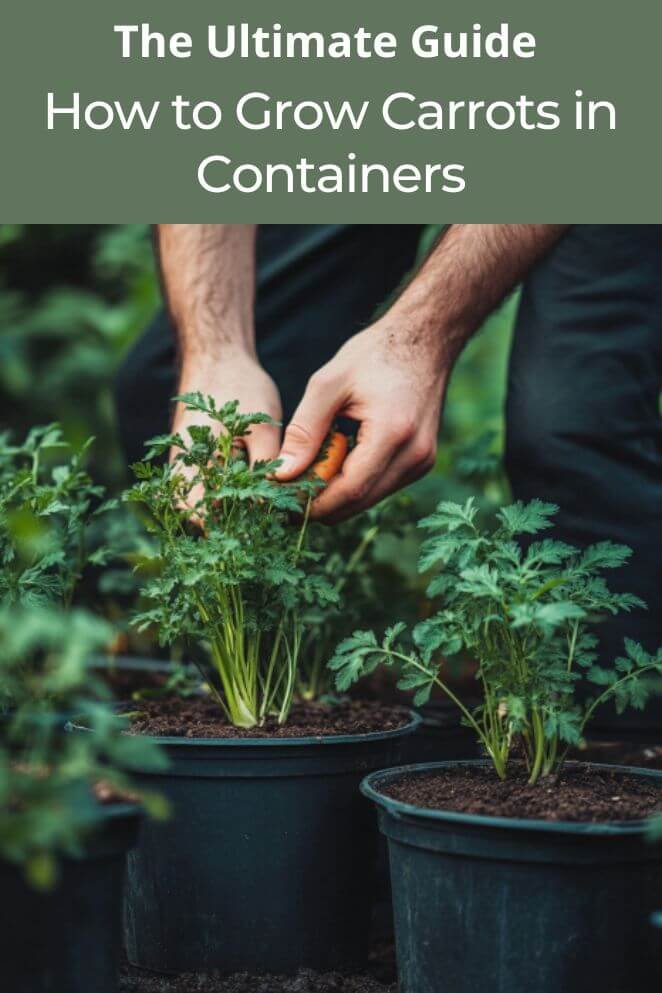
Carrots are a cool-season crop, loved for their crunch and sweet flavor.
While they’re traditionally grown in garden beds, container gardening has made it possible to grow carrots almost anywhere.
Containers offer better control over soil conditions and can be moved to optimize sunlight exposure.
Whether you’re a seasoned gardener or a beginner, growing carrots in containers is a rewarding experience that doesn’t require much space.
Choosing the Right Container and Soil
Container selection
The success of growing carrots in containers starts with choosing the right pot:
- Depth: Carrots need deep containers to accommodate their roots. Opt for a container at least 12–18 inches deep. For longer carrot varieties, a 20-inch-deep container is ideal.
- Material: Containers made of plastic, clay, or fabric work well. Fabric grow bags are particularly good because they allow better air circulation and root growth.
- Drainage: Ensure the container has adequate drainage holes to prevent waterlogging, which can cause root rot.
Soil preparation
Carrots thrive in loose, well-draining soil:
- Type: Use a high-quality potting mix that’s light and fluffy. Avoid garden soil, as it’s too heavy and can compact in containers.
- Amendments: Mix in compost or well-rotted manure to enrich the soil with organic matter. Carrots prefer slightly acidic to neutral soil with a pH of 6.0–7.0.
- Avoid rocks: Sift the soil to remove stones and debris, as these can cause carrots to grow misshapen.
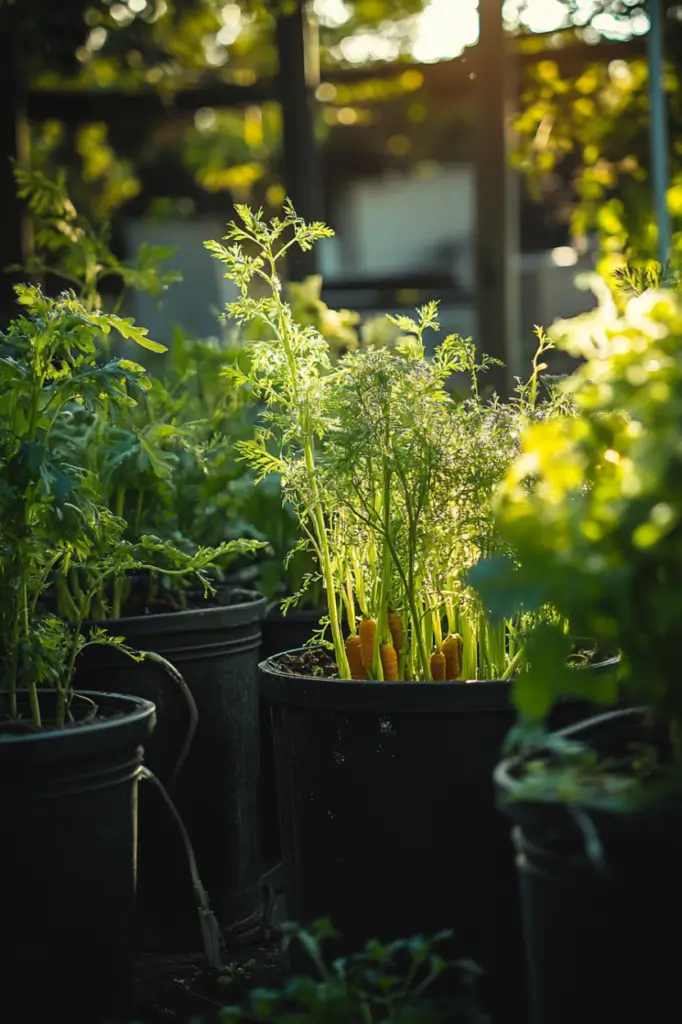
Sowing Carrot Seeds
Direct sowing
Carrots grow best when sown directly into the soil or container because they don’t transplant well.
Here’s how to plant them:
- Timing: Plant carrots in early spring or late summer, as they prefer cooler weather for optimal growth.
- Spacing: Spread the seeds evenly over the soil and cover them lightly with about ¼ inch of soil. Space the seeds around 2 inches apart to allow enough room for the roots to grow properly.
- Watering: After planting, water gently to keep the soil moist but not soaked. This helps the seeds germinate without overwatering.
Thinning Seedlings
Once your carrot seeds have germinated, usually in about 10–20 days, it’s time to thin out the seedlings.
This helps prevent overcrowding and ensures each plant has enough space to grow.
- How to thin: Use scissors to carefully snip the extra seedlings, rather than pulling them out. This minimizes the risk of disturbing the roots of the remaining plants.
- Spacing: Leave about 2–3 inches of space between each plant to give them room to grow healthy and strong.
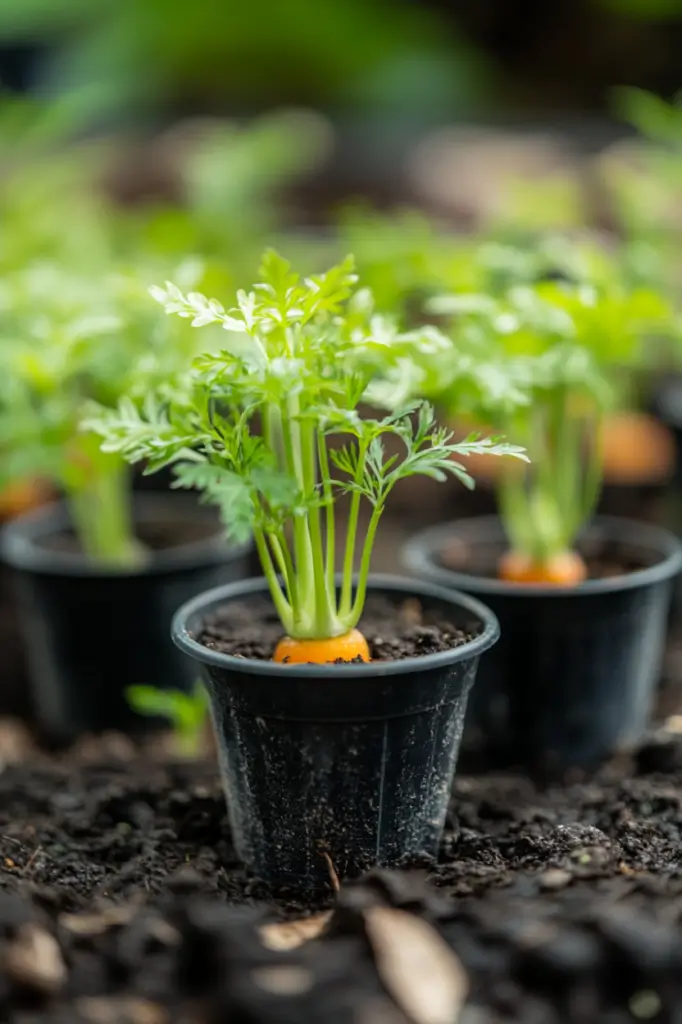
Caring for Carrot Plants
Watering
Carrots require steady moisture, particularly when they’re young and still growing.
- How often: Water your carrot plants 2–3 times a week, but adjust this based on the weather. Make sure the soil doesn’t dry out completely.
- Watering technique: Water at the base of the plants to keep the leaves dry. Wet foliage can lead to fungal diseases.
Sunlight
Carrots thrive with plenty of sunlight, but it’s important to find the right balance:
- Ideal exposure: Ensure your carrot container gets at least 6–8 hours of direct sunlight each day.
- In hot climates: If you live in a very hot area, it’s a good idea to give your carrots some afternoon shade to protect them from the intense heat.
Fertilizing
Carrots are not heavy feeders, but they still benefit from a little extra nutrition:
- Frequency: Apply a balanced, low-nitrogen fertilizer every 4–6 weeks. Too much nitrogen can cause lots of leafy growth, but not enough focus on root development.
- Type: Choose a fertilizer that’s higher in potassium and phosphorus, as these nutrients support strong root growth.
Troubleshooting Common Problems
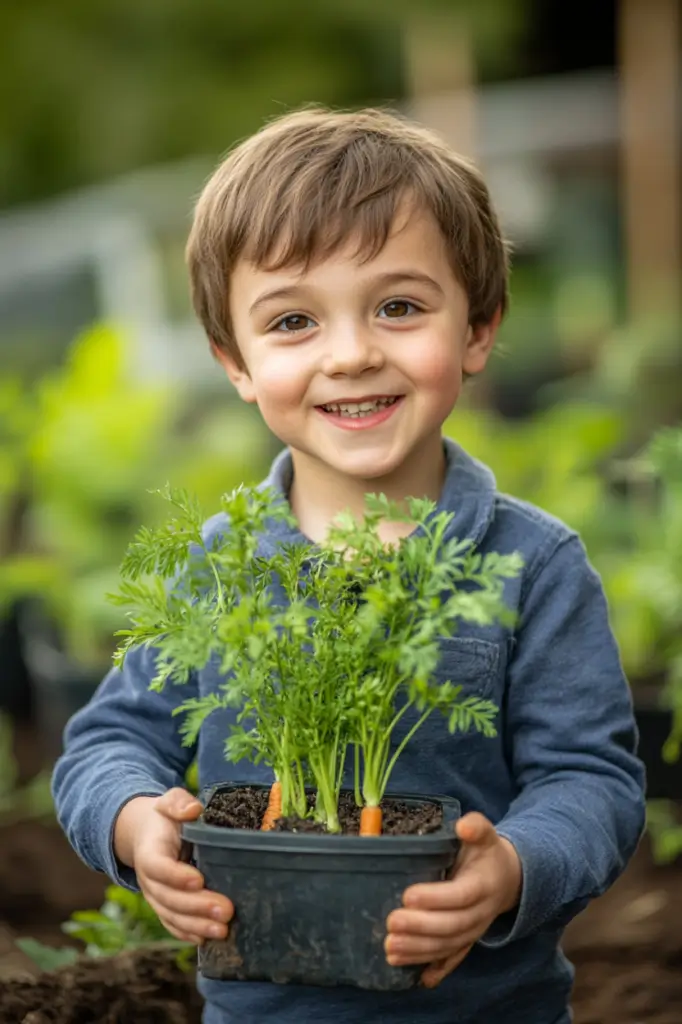
Pests
- Aphids: These tiny insects suck the sap from your carrot leaves, weakening the plants. You can control them with neem oil or insecticidal soap.
- Carrot root fly: The larvae of this pest can damage the roots. To protect your plants, cover the container with fine mesh netting to keep the flies away.
- Slugs: Slugs can be a problem, especially in damp conditions. You can deter them by setting up beer traps or placing crushed eggshells around the base of the container.
Diseases
- Powdery mildew: This fungal disease appears as a white, powdery coating on the leaves, often due to high humidity. To prevent it, improve air circulation around your plants and treat with a fungicide.
- Root rot: Overwatering can cause the roots to rot. Ensure your container has proper drainage and avoid letting the soil become waterlogged.
- Leaf blight: If you notice brown spots on your carrot leaves, it could be leaf blight. Remove any infected leaves and treat the plant with a copper-based fungicide to stop the spread.
Final Thoughts
Growing carrots in containers is an enjoyable and practical way to cultivate your own vegetables, even in small spaces.
By selecting the right container, preparing ideal soil, and providing consistent care, you can ensure a successful harvest.
Plus, container gardening gives you more control over pests and diseases, making it a beginner-friendly option.
Whether you’re growing classic orange carrots or experimenting with colorful varieties like purple or yellow, the key is patience and attention to detail.
In no time, you’ll be enjoying fresh, homegrown carrots that taste far better than anything store-bought!
